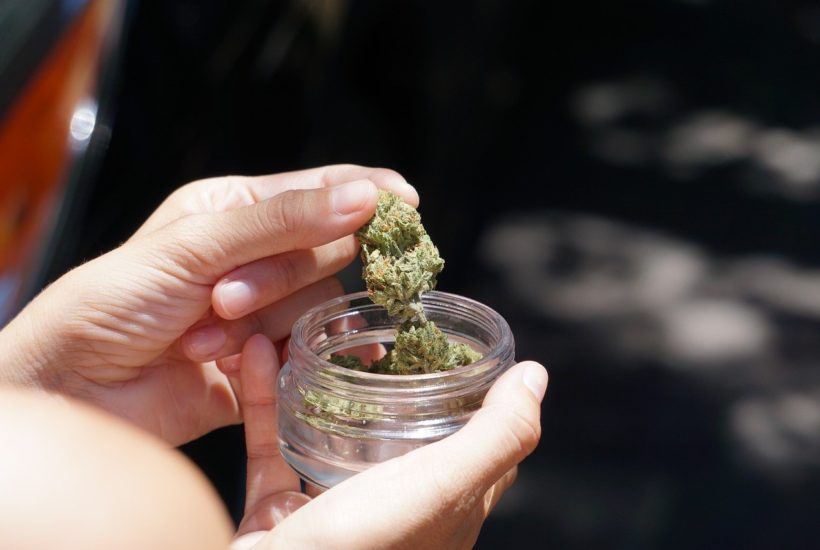Cannabis
Late legalization slows approval of 92 cannabis product patents in Mexico
The regulation published by the authorities in the Official Journal of the Federation (DOF) gives the green light to medical research on cannabis products, which have to be developed under the protocols created for pharmaceuticals. Beyond the registration of patents for cannabis medicines, industry experts believe that companies will face challenges in medical research, linked to these protocols.

Applications for patents for cannabis-based products have increased rapidly in Mexico since the medicinal use of the plant was approved in 2016. However, new regulations passed in January of this year have put a handbrake on the unburdening of patents, delaying the launch of new products.
The regulation, which the Ministry of Health and the Federal Commission for Protection against Health Risks (Cofepris) published on January 12, deals with aspects related to the regulation, control, promotion, and health surveillance of cannabis as raw material, its pharmacological derivatives, and medicines.
So far, the Mexican Institute of Industrial Property (IMPI) has about 92 processes for the registration of patents with the word cannabis, related to treatments for epilepsy, amyloidosis and even cannabis extraction processes, when in 2015 there were only six. There are also applications for 203 trademarks for stores, organizations, radio and television educational programs and cosmetic products among others.
The regulation published by the authorities in the Official Journal of the Federation (DOF) gives the green light to medical research on cannabis products, which have to be developed under the protocols created for pharmaceuticals, that is, they must have extensive clinical research.
Janko Ruiz de Chávez, director and founder of CBD Life, explains that there is a false belief about patent registration, since there are those who consider that since cannabis (which does not consider the plant’s psychotropic active ingredient) already existed, this procedure cannot be carried out, when what is being registered is the exact combination of ingredients for a therapeutic indication.
“Because of the medical degree of research, if a cannabis molecule is combined with another one, it must go through the New Molecules Committee and be registered as a new patent. If it already exists, like Epidiolex, you can make a generic. But, in either case, we are considering going through the Committee to register new products,” he explains.
The executive of the company that markets Marigüanol balsam, considers that in Mexico it is possible to create different patent medicines based on cannabis, in addition to the fact that those who enter this industry can take advantage of the international scope with the permits issued by the Cofepris.
Read more on the subject and find other cannabis news with the Hemp.im mobile app.
Medical cannabis locks will limit business development
Beyond the registration of patents for cannabis medicines, industry experts believe that companies will face challenges in medical research, linked to protocols created for pharmaceutical companies, i.e., consider very strict records that are developed in the long term.
While the potential for medical cannabis in the country is on the table, the market will reach a value of 50 million dollars by 2024, from an estimated value of 3.5 million dollars this year, according to the German consulting firm Statista.
Intellectual property beyond medicine
The registration of products made from cannabis, and which are not necessarily within the pharmaceutical industry, has been on the rise since 2016 and is expected to have an exponential growth once the Congress of the Union takes out of the freezer the Law to legalize the ludic and industrial use of marijuana, next September.
Jiangsu Wonpeg, president of the Latin American Cannabis Alliance (Alcann) and general director of CannaLife, considers that the industry has grown without regulation. Just look at the increased involvement of individuals, companies and brands related to cannabis issues.
Paulina Aguilera, consultant at ClarkeModet, considers that, as part of the global trend, in Mexico there will be an accelerated growth in the number of applications to generate intellectual property around cannabis, once the legislation is approved. In the world, he details, the request for registrations doubled from 2015 to 2020 and went from 4,000 to 8,000 applications for registrations.
“It is clear that the legalization of medical use did influence the number of patent applications filed, which means that applicants see in Mexico a potential market to commercialize their products and will create more areas of opportunity to develop solutions around the use of cannabis,” he points out.
The specialist states that although there are applications aimed at different sectors, most of them are focused on therapeutic uses and medical preparations with cannabionoids, followed by chemical uses related to the extraction and purification processes of cannabis.
Regarding patents related to medical cannabis, Aguilera explains that once the IMPI grants patent rights, it is Cofepris who is in charge of granting authorization for commercialization and it is here where players in the sector must comply with the rules published in January.
For now, the industry is waiting for the approval of the Law once the next legislative period begins, as the Supreme Court of Justice has not called on the legislators to approve the legislation, which had a deadline of April 30.
Industry players and activists estimate that Mexico has the potential to develop a market worth US$5 billion and create up to 75,000 jobs once the law is passed.
__
(Featured image by elsaolofsson via Pixabay)
DISCLAIMER: This article was written by a third party contributor and does not reflect the opinion of Born2Invest, its management, staff or its associates. Please review our disclaimer for more information.
This article may include forward-looking statements. These forward-looking statements generally are identified by the words “believe,” “project,” “estimate,” “become,” “plan,” “will,” and similar expressions. These forward-looking statements involve known and unknown risks as well as uncertainties, including those discussed in the following cautionary statements and elsewhere in this article and on this site. Although the Company may believe that its expectations are based on reasonable assumptions, the actual results that the Company may achieve may differ materially from any forward-looking statements, which reflect the opinions of the management of the Company only as of the date hereof. Additionally, please make sure to read these important disclosures.
First published in EXPANSION a third-party contributor translated and adapted the article from the original. In case of discrepancy, the original will prevail.
Although we made reasonable efforts to provide accurate translations, some parts may be incorrect. Born2Invest assumes no responsibility for errors, omissions or ambiguities in the translations provided on this website. Any person or entity relying on translated content does so at their own risk. Born2Invest is not responsible for losses caused by such reliance on the accuracy or reliability of translated information. If you wish to report an error or inaccuracy in the translation, we encourage you to contact us.

-

 Fintech5 days ago
Fintech5 days agoPakistan’s Digital Finance Paradox: Growth, Fraud, and the Fight for Trust
-

 Cannabis2 weeks ago
Cannabis2 weeks agoMedical Cannabis in Poland 2025: Growth, Stability, and Wider Access
-

 Impact Investing3 days ago
Impact Investing3 days agoBeyond the ESG Label: Integrating Sustainability for Long-Term Value
-

 Crypto2 weeks ago
Crypto2 weeks agoBitMine Surpasses 4 Million ETH Holdings Amid Market Volatility























